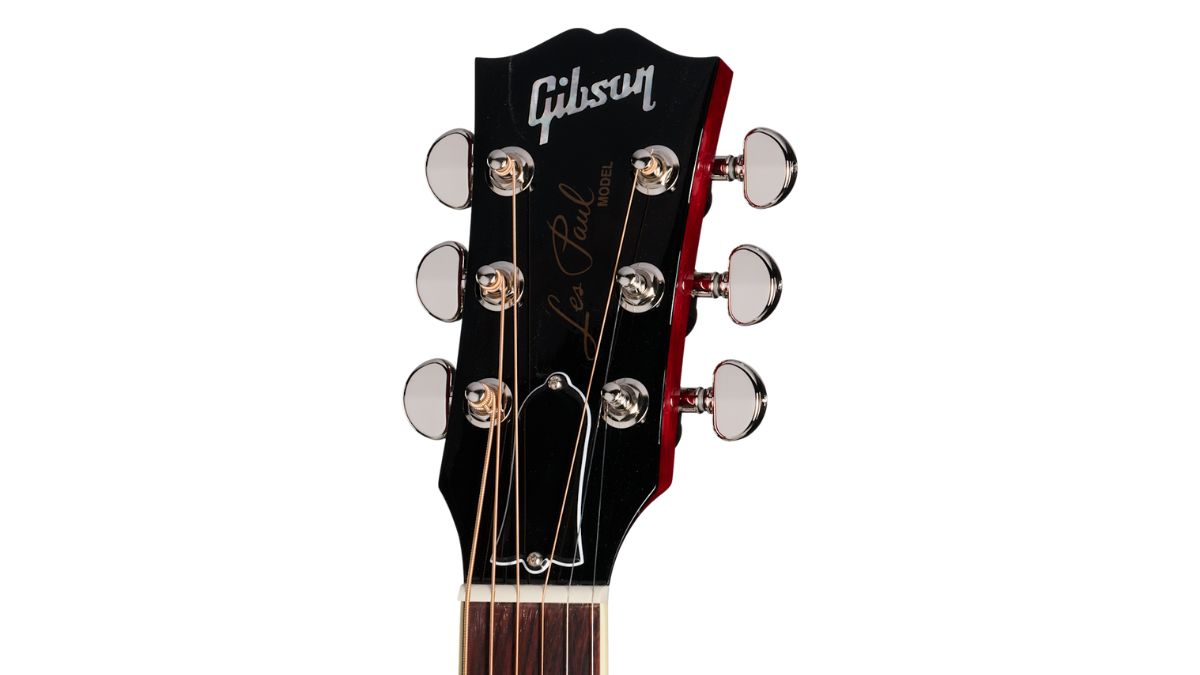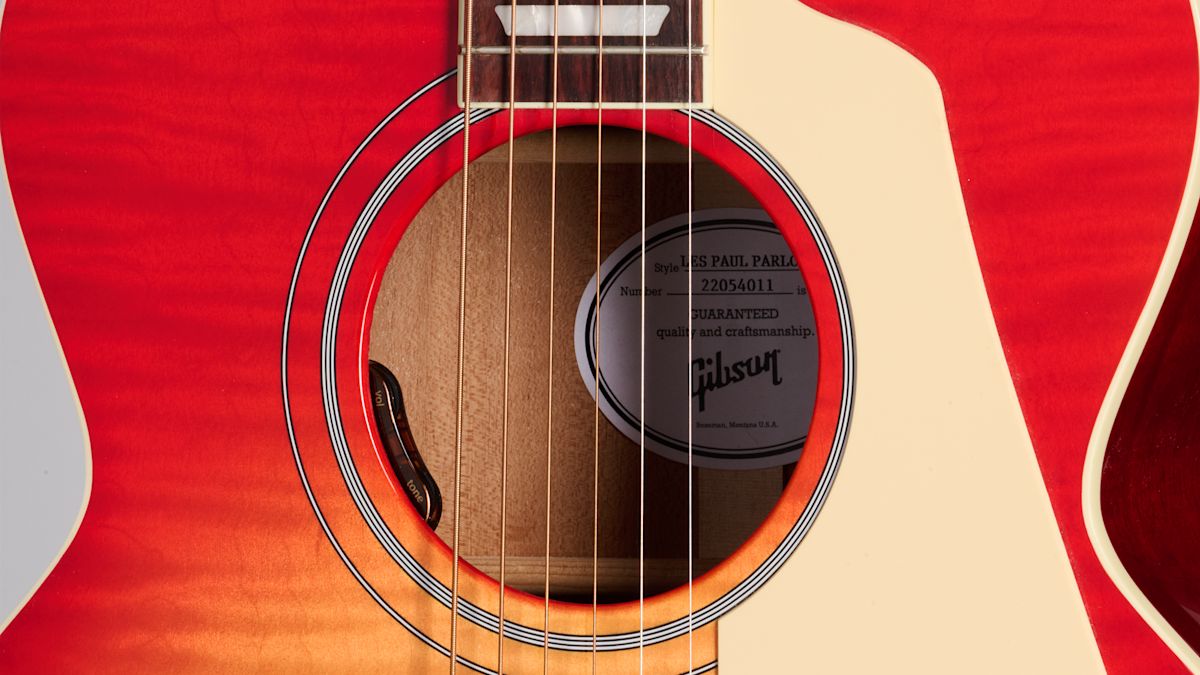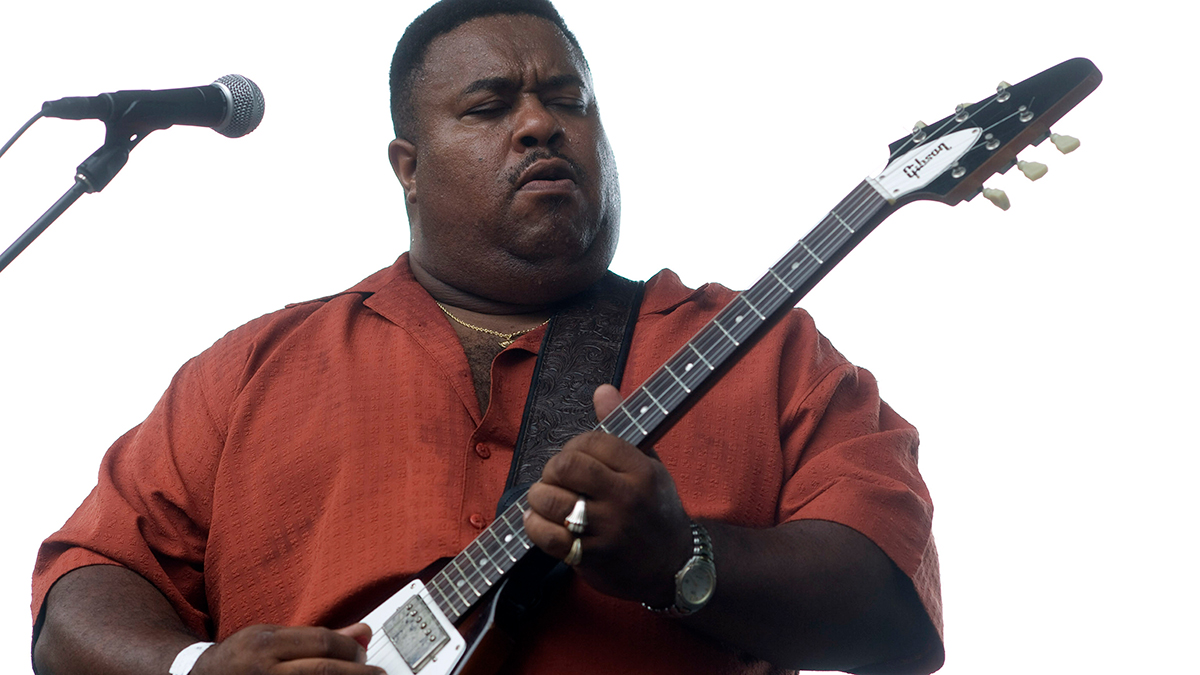Gibson brings back its wild Les Paul acoustic hybrid for the first time in more than 20 years – and it’s unlike any other version that came before it
The firm’s third attempt at converting its iconic single-cut shape into a campfire companion settles on a parlor design reminiscent of a scaled-down SJ-200

There’s no doubt that the Gibson Les Paul is one of the most iconic electric guitars ever produced, but does it work as an acoustic guitar? That's a question Gibson is clearly keen to answer with the launch of the Les Paul Parlor.
It’s likely to divide fans (similar to how Fender’s Acoustasonic range split opinion) but it’s certainly an interesting concept.
Gibson is approaching cautiously here. Unlike its previous Les Paul acoustic iterations – which came in 1969 and 2000 for three and four-year runs, respectively – the body shape is a lot smaller this time around. Featuring a parlor-sized body “reminiscent of a scaled-down SJ-200”, its compactness may just sway those on the fence about this hybrid aesthetic.
Taking tonewood cues from the source material, its back and sides are crafted with solid mahogany, and there’s a AAA flame maple top for “a bit of bite and note definition to the warm tone from the mahogany body”.
The bookmatched top also benefits from traditional scalloped X-bracing with single-ply cream binding found all over to ensure the Les Paul’s legendary chic carries across.
Mahogany is also employed for the neck, which has a notable Advanced Response profile. Expect a neck that’s not “too beefy nor too slim”, while its 12"-radius, 19-fret fingerboard is made from rosewood. Pearloid trapezoid inlays harmonize with the guitar’s cream binding (and continues the LP vibe, naturally) and the neck attaches to the body with a compound dovetail neck-to-body joint.

Rosewood returns for the bridge, which is installed in a belly-down orientation. TUSQ is the material of choice for its nut and saddle, and its Grover Rotomatic tuners are nickel-plated.
All the latest guitar news, interviews, lessons, reviews, deals and more, direct to your inbox!
Another hint of the parlor’s electric lineage comes via the mother-of-pearl Gibson logo and gold Les Paul Model decal on the headstock.
And, seeing as it’s part of the LP family, it would be remiss not to saddle this thing up with some pickups. An L.R. Baggs VTC +4 under-saddle piezo pickup and active preamp are the electronics of choice here.

As the system's name implies, this model has an output 4dB hotter than the standard VTC system. Still, we can't imagine this guitar is going to be hooked up to a Marshall stack.
There are two finish options available, Vintage Sunburst and Vintage Cherry Sunburst, and both are available as left-handed models too.

The Gibson Les Paul Parlor is priced at $3,999 and comes with a hardshell case.
Head to Gibson to oggle it some more.
Gibson has been evolving its acoustic range in 2025, with top picks including a new Acoustic Specials series that brings its most beloved (and expensive) designs to lower price points, a downsized, single-cut take on the SJ-200 via the Parlor Rosewood EC, and a signature, twist-laden take on the J-45 for Margo Price.
A freelance writer with a penchant for music that gets weird, Phil is a regular contributor to Prog, Guitar World, and Total Guitar magazines and is especially keen on shining a light on unknown artists. Outside of the journalism realm, you can find him writing angular riffs in progressive metal band, Prognosis, in which he slings an 8-string Strandberg Boden Original, churning that low string through a variety of tunings. He's also a published author and is currently penning his debut novel which chucks fantasy, mythology and humanity into a great big melting pot.
You must confirm your public display name before commenting
Please logout and then login again, you will then be prompted to enter your display name.

